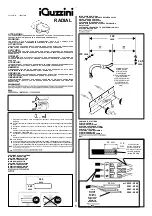
6
Care and Cleaning
□
It is recommended that solar lights not be used in freezing conditions. Monitor weather and take solar items
indoors for storage as needed. Keep snow or other buildup off the solar panels so that the batteries are able to
recharge.
□
Remove batteries from equipment that will not be used for an extended period of time.
Troubleshooting
Problem
Solution
The solar lights do not
come on.
Check to ensure there are no obstructions over the top of the solar panel.
Check
to
ensure
that
the
batter
ies
are
installed
correctly
and
there
is
nothing
blocking
the
battery
terminals
from
making
contact.
Check to ensure the solar panel is positioned to sense both daylight and night time. If
bright lights shine near or into the solar panel, these lights may trigger the light sensor
and the lights may turn off. Bright lights can act like daylight and keep the system from
starting.
Batteries may need to be changed and vary by use, temperature, weather conditions,
and heat. Replace the batteries with the exact same type of rechargeable batteries.
Ensure the batteries are fully charged. It is important to charge the batteries for 12 hours
in full sun before usage. Cloudy or rainy days may require a longer charging time.
In
some
cases,
you
may
have
to
open
the
battery
compartment
and
position
the
batteries
correctly
between
metal
clips
as
some
dislodging
may
occur
during
the
shipment.
Also
ensure
the
correct
polarity
(+)
and
(-).
Cloudy or rainy days generate far less charge on the solar panel and thus fewer hours of
operation. Prolonged cloudy or rainy days can affect performance dramatically.

























